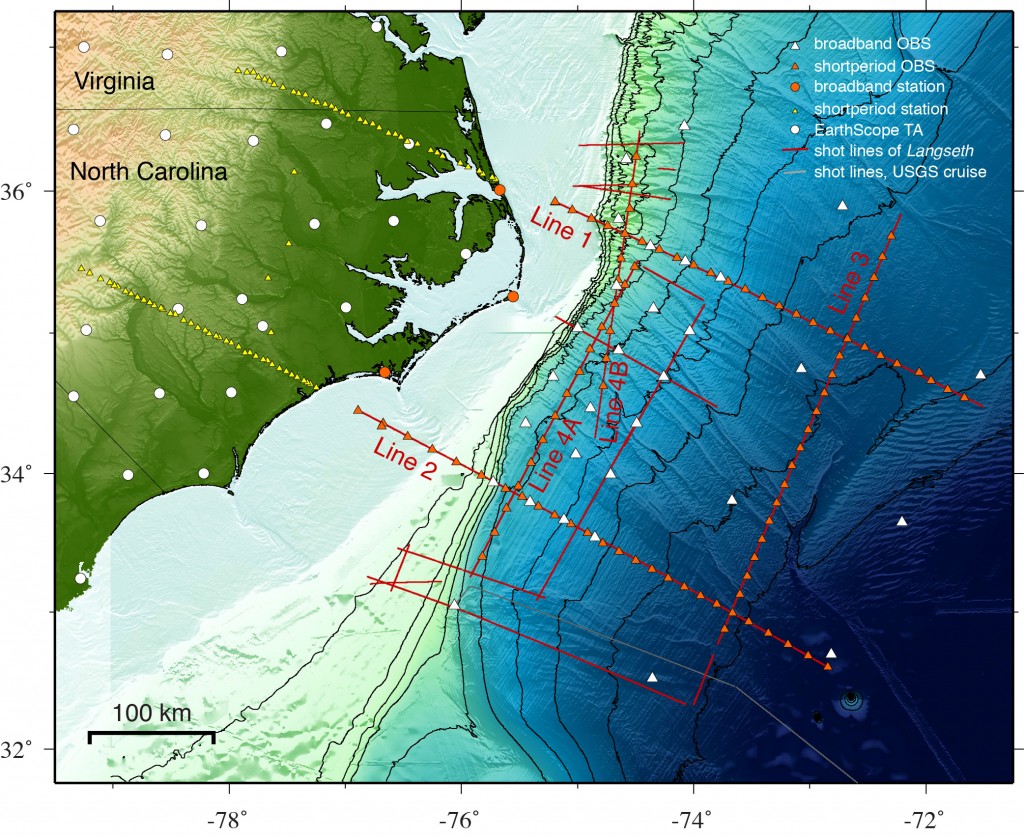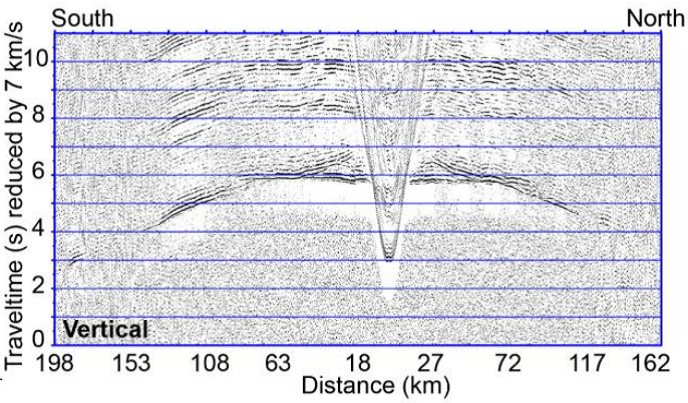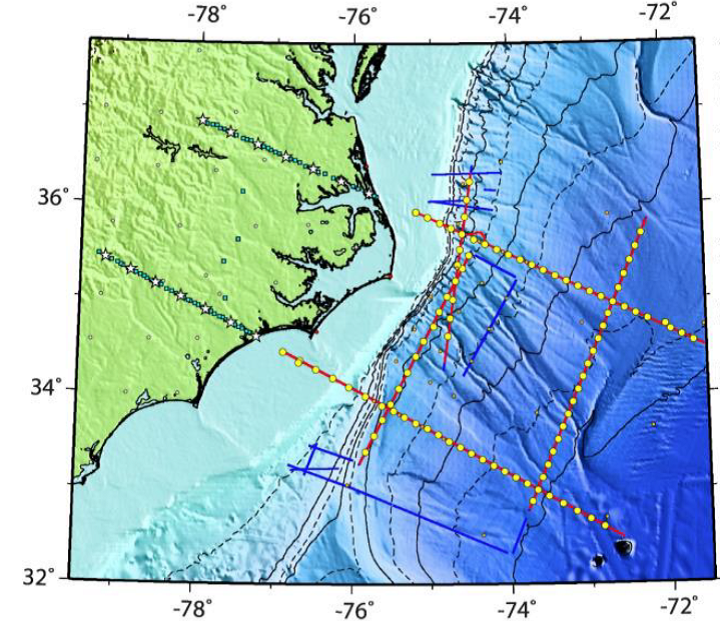1) Postdoctoral Researcher Position in Geodynamics – University of Minnesota
2) Tenure-Track Assistant Professor in Geodynamics – Earthquake Research Institute, The University of Tokyo
3) Tenure-track Assistant Professor in Structural Geology and Geophysics – Texas A&M University–Kingsville, Department of Physics and Geoscience
———————————–
1) Postdoctoral Researcher Position in Geodynamics – University of Minnesota
We invite applications for a postdoctoral researcher position in geodynamic modelling at the University of Minnesota. A key objective of the project is to understand the pattern of fluid migration in subduction zones through numerical simulation and synthesis and analyses of geochemical and geophysical constraints for the distribution and migration of fluids in subduction zones. Qualified candidates should have a background in numerical programming and modeling of geodynamic processes. Positions are available for one year and are renewable for a second year depending upon performance and availability of funds. Applications should include a brief statement of research experience and interests, dissertation abstract, and curriculum vitae with publications list, immigration status, and contact information for two references. Questions can be address to Ikuko Wada (iwada@umn.edu). Applications should be submitted online at https://employment.umn.edu/applicants/jsp/shared/Welcome_css.jsp. Position requisition number is 192743.
———————————–
2) Tenure-track Assistant Professor in Geodynamics – Earthquake Research Institute, The University of Tokyo
Job Description
Subduction is the dominant process that has shaped the geological evolution of Japan and drives its modern-day hazards. We seek an early career researcher at the level of assistant professor who will engage in research to examine the geodynamics of the subduction system. Preference will be given to candidates with interest in how the crust and lithosphere are affected by the subduction process. We encourage applicants who develop integrated geodynamic models and apply tests using leading-edge numerical simulation methods in order to examine crust and lithospheric processes at various spatial and time scales that bridge the earthquake cycle to tectonic deformation. The successful candidate must be highly motivated, have the potential to execute pioneering research with strong ties to observational research, and take a leadership role to build an active geodynamics team that interacts with other groups within ERI and the international community. ERI carries out fundamental research on earthquakes and volcanoes in order to contribute to mitigation of associated natural disasters. The successful candidate’s research will be directly applicable to ERI’s mission in collaboration with ERI scientists. The primary responsibility of professors at this institute is to carry out research; and the successful candidate may advise or mentor graduate students in conjunction with faculty of the University of Tokyo. Candidates must have a Ph.D. or an equivalent academic degree. Females and international applicants are encouraged to apply.
The tenure-track assistant professor hired through this program has the possibility to be promoted to associate professor with a permanent position at the ERI, the University of Tokyo, if deemed qualified through an evaluation of his or her achievements. Early evaluation after three years will lead into a tenure decision after five years. Please contact the person below for more details.
Candidates are asked to submit the following set of documents to the address below:
– CV
– List of academic publications
– Reprints (or copies) of three representative papers.
– Summary of research that the candidate has conducted (300-500 words).
– Proposal for research to be undertaken at ERI (300-500 words) including a statement on development of integrated research projects in geodynamics.
– Names, contact information, and email addresses of two references.
The set of documents must be addressed to:
Personnel Section, Earthquake Research Institute, University of Tokyo
1-1-1 Yayoi, Bunkyo-ku Tokyo 113-0032 JAPAN
Please indicate in red on the envelope containing the set of documents: “Application for assistant professor position in geodynamics.”
We will begin reviewing applications on January 30, 2015.
For further information, contact Prof. Hiroshi Sato (email: satow@eri.u-tokyo.ac.jp, Tel: +81-3-5841-5737).
Employer Information
ERI employs over 80 top-notch academics (professors, associate professors and research associates) drawn from diverse fields, ranging from seismology to volcanology, geophysics, geochemistry, geology, geodesy, applied mathematics, information science, civil engineering and seismic engineering. Together with a support staff of 50, 30 visiting researchers and 70 graduate students, we work on advanced research, technique development, field observations, experiments, theoretical studies, analyses and computer simulations. We promote comprehensive research and education in order to achieve two goals. 1) Scientifically unraveling the various phenomena within the earth and seismic/volcanic activities on our planet. 2) Mitigation of disasters from such phenomena. ERI is composed of 4 divisions, 5 centers, and other supporting offices and sections.
Homepage: http://www.eri.u-tokyo.ac.jp/eng/
———————————–
3) Tenure-track positions in Structural Geology and Geophysics – Texas A&M University–Kingsville, Department of Physics and Geoscience
The Department of Physics and Geosciences at Texas A&M University–Kingsville seeks applicants for two tenure track faculty positions at the Assistant Professor level to begin August 1, 2015. We seek a Structural Geologist (job posting # 0602011) with a PhD in Geology with teaching responsibilities to include introductory courses, structural geology, and field methods. We also seek a Geophysicist (job posting # 0602010) with a master’s degree in Physics and a PhD in Geophysics with teaching responsibilities to include undergraduate physics and geophysics courses and graduate geophysics courses. Degrees are required at the time of appointment. Applicants must develop a viable, sustainable, strong, externally-fundable research program involving undergraduate students.
For additional information see http://www.tamuk.edu/artsci/physics_geosci/ and to apply, please visit the following website: https://javjobs.tamuk.edu; An EO/AA/Veterans/Disability Employer.
———————————–
Please note, new job announcements (usually) will be distributed to the GeoPRISMS Listserv on the 1st and 15th of each month.



